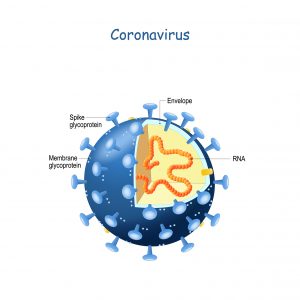Colorado has an interest ballot issue for the next election. It is supposedly designed to “Protect animals for unnecessary suffering and exploitation”. Specifically, it involves revisions to statutes 18-9-201 (amending sections (2), (2.9), and (5), and adds section (3.5)) and revisions to 18-2-202 (adding section 1.9).
16OriginalFinal.pdf (state.co.us)
Statute 18-9-201: Definitions
Section 2 revisions include deleting the word ‘dumb’ and replacing it with ‘non-human’. Makes sense to me. I never understood the use of the word ‘dumb’ in the first place since there are some pretty ‘dumb’ humans out there.
(2) “Animal” means any living dumb NON-HUMAN creature, including, BUT NOT LIMITED TO, A DOG, A CAT, A HORSE, LIVESTOCK, a certified police working dog, a police working horse, and a service animal as those terms are defined, respectively, in subsections (2.3), (2.9), (2.4), and (4.7) of this section.
Section 2.9 involves the addition of fish as a type of livestock. Since fish are commercially farmed, I have no problem with that either.
(2.9) “Livestock” means bovine, camelids, caprine, equine, ovine, porcine, FISH and poultry.
Section 3.5 is added to give the lifespan of livestock animals. I have a problem with the determinations of some of these lifespans. For example, it is highly unlikely that a broiler chicken could live for eight years. It would have died of a heart attack long before that or the excess weight will result in serious leg issues. They are not meant to live more than 8-10 weeks. They are a genetic hybrid cross and will likely never be able to reproduce. The males will be too big to mount the females to mate and the hens are unlikely to produce many eggs anyway. The same can be said for commercial meat turkeys. This information on lifespan estimates is important in relation to additions to section 18-9-202 which will be discussed later.
(3.5) “NATURAL LIFESPAN” FOR THE FOLLOWING SPECIES SHALL BE EXPLICITLY DEFINED HERE BASED ON STATISTICAL ESTIMATES: A COW LIVES TO 20 YEARS, A CHICKEN LIVES TO 8 YEARS, A TURKEY LIVES TO 10 YEARS, A DUCK LIVES TO 6 YEARS, A PIG LIVES TO 15 YEARS, A SHEEP LIVES TO 15 YEARS, A RABBIT LIVES TO 6 YEARS.
Section 5 deals with sex with animals and I won’t even discuss that.
(5) “Sexual act with an animal” means an act between a person and an animal involving either direct physical contact between the genitals of one and the mouth, anus, or genitals of the other. SEXUAL ACT WITH AN ANIMAL ALSO INCLUDES ANY INTRUSION OR PENETRATION, HOWEVER SLIGHT, WITH AN OBJECT OR PART OF A PERSON’S BODY INTO AN ANIMAL’S ANUS OR GENITALS. A sexual act with an animal may be proven without allegation or proof of penetration. Nothing in this subsection (5) shall be construed to prohibit ANY PERSON FROM DISPENSING CARE TO AN ANIMAL IN THE INTEREST OF IMPROVING THAT ANIMAL’S HEALTH accepted animal husbandry practices.
Statute 18-9-201.5: Scope of Part 2
They remove ‘accepted animal husbandry practices .. for livestock’ as an exception to the new cruelty to animal laws.
(1) Nothing in this part 2 shall affect accepted animal husbandry practices utilized by any person in the care of companion or livestock animals or in the extermination of undesirable pests as defined in articles 7 AND 10, and 43 of title 35, C.R.S.
Statute 18-9-202: Cruelty to animals – aggravated cruelty to animals
The newly added section dictates that people can only slaughter food animals after they have lived one-quarter of their natural lifespan. That would mean, based on the lifespans given in 18-9-201 section 3.5, chickens cannot be slaughter until they are at least two years old. That is a pretty tough chicken, regardless of the breed. Similarly, turkeys would need to be at least 2.5 years old and ducks would need to be at least 1.5 years old (trying plucking that duck!). If you like pork, it would have to come from a pig that is at least 3.75 years old. Same for sheep – they would have to be 3.75 years old, so no more lamb for sale. For beef, the cow would need to be five years old (that is a tough steak!). It is interesting that they added fish to the definition of livestock, but don’t give a natural lifespan that species.
(1.9) ANY PERSON WHO SLAUGHTERS LIVESTOCK IN ACCORDANCE WITH ACCEPTED AGRICULTURAL ANIMAL HUSBANDRY PRACTICES DOES NOT VIOLATE THE PROVISIONS OF SUBSECTION (1) OF THIS SECTION SO LONG AS THE ANIMAL HAS LIVED ONE QUARTER OF THEIR NATURAL LIFESPAN BASED ON SPECIES, BREED, AND TYPE OF ANIMAL AND THE ANIMAL IS SLAUGHTERED IN SUCH A WAY THAT THE ANIMAL DOES NOT NEEDLESSLY SUFFER.
The next law is to be called Wilbur’s Law. I guess that is from Wilbur in the Charlotte’s web story.
(4) The short title of this section is “Punky’s WILBUR’s Law”.
The low would take effect on April 1, 2023. I wouldn’t want to purchase any meat produced in Colorado after that date! But I guess that is what the animal rights people want – to shut down meat production in the state. So much for animal welfare considerations though.
Section 4. Effective Date: This act takes effect April 1 st 2023, and applies to offenses committed on or after said date.


